UPSC Daily Current Affairs: 7th June 2025 | Current Affairs & Hindu Analysis: Daily, Weekly & Monthly PDF Download
GS3/Economy
RBI’s Monetary Policy Committee (MPC) Decisions
Source: Indian Express
Why in News?
The Reserve Bank of India (RBI) announced a significant cut in the Cash Reserve Ratio (CRR) during its recent Monetary Policy Committee (MPC) meeting. This move aims to inject ₹2.5 lakh crore into the banking system by November 2025, enhancing liquidity.
Key Takeaways
- The CRR has been reduced by 1% in four tranches, bringing it down to 3% by November 29, 2025.
- The current Statutory Liquidity Ratio (SLR) remains unchanged at 18% of Net Demand and Time Liabilities (NDTL).
Additional Details
- Cash Reserve Ratio (CRR): This is the percentage of a bank’s total deposits that must be maintained as liquid cash with the RBI. It is not available for lending or investment, and no interest is earned on this amount. The CRR is a tool used to control liquidity and inflation in the economy.
- Increasing the CRR reduces a bank's lending capacity, while decreasing it enhances liquidity. The current CRR is set at 4.5% of NDTL.
- Statutory Liquidity Ratio (SLR): This is the minimum percentage of NDTL that banks must maintain in liquid form, which includes cash, gold, or approved government securities. It helps ensure bank solvency and restricts excessive credit growth.
- Raising the SLR reduces the funds available for lending, while lowering it boosts credit and growth, aiding in government securities demand.
- Repo Rate: This is the rate at which the RBI lends short-term funds to commercial banks against government securities. A lower repo rate makes borrowing cheaper, thus boosting liquidity, whereas a higher repo rate increases borrowing costs, reducing liquidity.
- Variable Rate Repo (VRR) Auction: This method allows RBI to conduct repo operations at variable interest rates determined through competitive bidding by banks, reflecting real-time liquidity demand and supply.
- Standing Deposit Facility (SDF): This facility allows banks to deposit surplus funds with the RBI without collateral, earning interest at a rate set by RBI, thus absorbing excess liquidity from the system.
- Weighted Average Call Rate (WACR): This is the weighted average interest rate at which banks borrow and lend overnight funds in the interbank call money market, serving as a key indicator of short-term liquidity conditions.
In summary, the RBI's recent decisions regarding the CRR and SLR aim to manage liquidity effectively in the banking system, fostering economic growth while maintaining stability.
If the RBI decides to adopt an expansionist monetary policy, which of the following would it not do?
- 1. Cut and optimise the Statutory Liquidity Ratio.
- 2. Increase the Marginal Standing Facility Rate.
- 3. Cut the Bank Rate and Repo Rate.
Select the correct answer using the code given below:
Options: (a) 1 and 2 only (b) 2 only* (c) 1 and 3 only (d) 1, 2 and 3
GS3/Defence & Security
PM Inaugurates Chenab Railway Bridge
Source: BBC
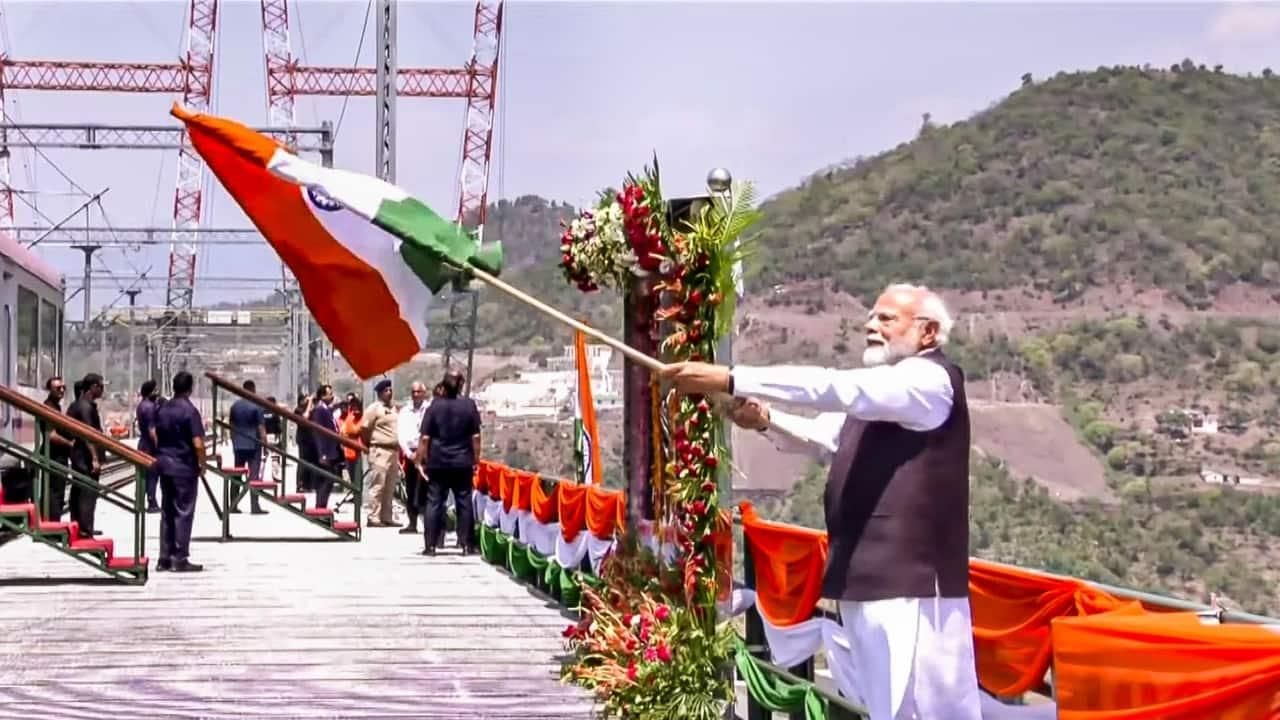 Why in News?
Why in News?The Prime Minister has inaugurated the world’s highest railway bridge, which spans the Chenab River in Jammu and Kashmir, marking a significant achievement in India's engineering and infrastructure development.
Key Takeaways
- The Chenab Rail Bridge is the highest railway bridge globally, located in the Reasi district of Jammu and Kashmir.
- The bridge reaches a height of 359 metres, surpassing the Eiffel Tower by 35 metres.
- It is a crucial part of the Udhampur–Srinagar–Baramulla Rail Link (USBRL).
Additional Details
- Structure and Length: The bridge measures a total of 1,315 metres, consisting of a 530-metre approach bridge and a 785-metre steel arch bridge.
- Project Execution: Constructed by Konkan Railway Corporation with contributions from Afcons Infrastructure, Ultra Construction & Engineering (South Korea), and VSL India.
- Design and Engineering: The foundation was designed by IISc Bengaluru, while IIT Delhi and IIT Roorkee conducted seismic analyses. The bridge is also made blast-proof by DRDO.
- Durability and Safety:It is engineered to withstand:
- Earthquakes of up to magnitude 8
- Blast impacts equivalent to 40 tonnes of TNT
- Temperatures as low as -20°C
- Wind speeds of 266 km/h
- Speed and Lifespan: The bridge supports train speeds up to 100 km/h and has a lifespan of 120 years.
- Key Milestones: The arch closure was completed in April 2021, and the Golden Joint Ceremony occurred on August 13, 2022.
Additionally, the Prime Minister inaugurated the Anji Bridge, which is India’s first cable-stayed railway bridge over the Anji River, a tributary of the Chenab. This bridge is the second highest in India, with a total length of 725 metres, featuring an ancillary viaduct and a central embankment. It is supported by 96 cables and is designed to withstand seismic activity, unstable terrain, strong winds, and heavy storms.
Consider the following statements:
- I. Indian Railways have prepared a National Rail Plan (NRP) to create a future-ready railway system by 2028.
- II. ‘Kavach’ is an Automatic Train Protection system developed in collaboration with Germany.
- III. ‘Kavach’ system consists of RFID tags fitted on track in station sections.
Which of the statements given above are not correct?
- Options: (a) I and II only (b) II and III only (c) I and III only (d) I, II and III*
This inauguration highlights India's commitment to enhancing its rail infrastructure and ensuring safety and efficiency in railway operations.
GS3/Economy
India’s Extreme Poverty Falls Sharply Under Revised World Bank Poverty Line
Source: Indian Express
Why in the News?
India has experienced a remarkable reduction in extreme poverty, dropping to 5.3% in 2022-23 from 27.1% in 2011-12. This substantial decline surpasses trends observed in previous decades, as reported by the World Bank with the release of updated data.
Key Takeaways
- India's extreme poverty rate decreased significantly under the revised threshold of $3 per day in 2021 PPP terms.
- The number of individuals living in extreme poverty fell from 344 million to over 75 million in the same period.
- Rural and urban poverty rates have also seen significant declines.
Additional Details
- Revised Global Poverty Thresholds: The World Bank has adjusted the extreme poverty line from $2.15 per day to $3 per day to reflect rising living costs. This shift enhances the comparability of poverty data across different time periods.
- India's Progress under Different Poverty Lines: Under the previous standard of $2.15 per day, India's poverty rate was 2.3% in 2022, compared to 16.2% in 2011-12. Moreover, under the lower-middle-income poverty line of $4.20 per day, the rate decreased from 57.7% to 23.9%.
- Demographic and Educational Inequities:
- Rural poverty dropped from 69% in 2011-12 to 32.5% in 2022-23.
- Urban poverty declined from 43.5% to 17.2%.
- 35.1% of individuals aged 16+ without formal education live below the poverty line, in contrast to 14.9% among those with post-secondary education.
- Improvements in Non-Monetary Indicators:
- India’s non-monetary poverty fell from 53.8% in 2005-06 to 15.5% in 2022-23.
- NITI Aayog estimates show a reduction in multidimensional poverty from 29.17% in 2013-14 to 11.28% in 2022-23.
- Consumption Trends:
- Rural Monthly Per Capita Expenditure (MPCE) rose from ₹1,430 in 2011-12 to ₹2,079 in 2023-24.
- Urban MPCE increased from ₹2,630 to ₹3,632, indicating an overall enhancement in living standards.
India's progress in reducing poverty, even under updated international benchmarks, highlights its advancements in economic development and social welfare. Nevertheless, challenges persist in addressing disparities across different groups. The full data for 2023-24 will be released in October 2025, providing further insights into India's post-pandemic poverty trajectory.
GS3/Science and Technology
Global Vaccine Trends and the Resurgence of Measles - A Public Health Wake-Up Call
Source: Economic Times
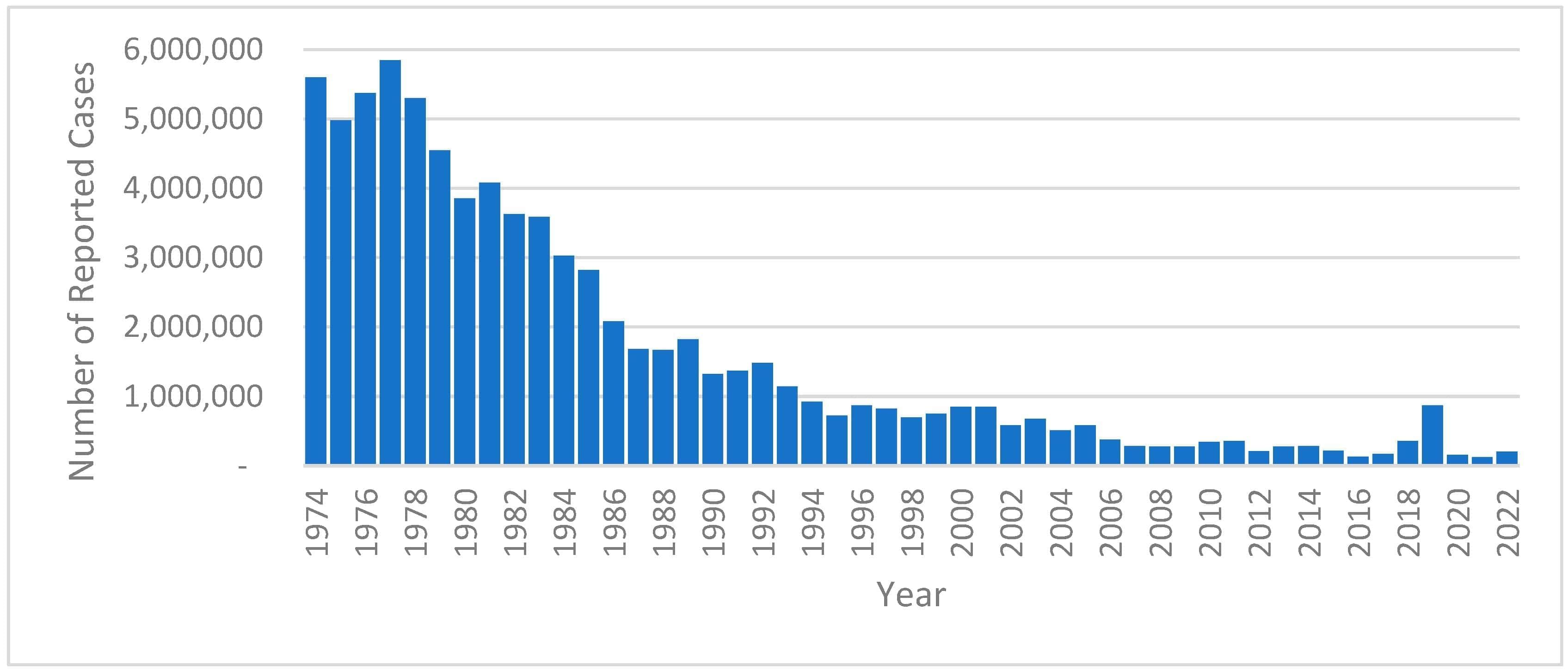 Why in News?
Why in News?The ongoing resurgence of measles cases in the United States serves as a stark reminder of the vulnerabilities present within even the most advanced healthcare systems. The COVID-19 pandemic has accelerated vaccine rollouts globally but has also contributed to declines in vaccination rates, particularly for measles, a disease that had been eliminated from the US in 2000.
Key Takeaways
- Vaccines are essential for individual and community health, significantly reducing disease transmission.
- The US has reported over 1,046 measles cases as of May 2023, primarily among unvaccinated individuals.
- Global measles vaccine coverage remains below the 95% threshold needed to prevent outbreaks.
Additional Details
- Expanded Programme on Immunisation (EPI): Launched by WHO in the 1980s, it aimed to improve access to vaccines including DTP, Polio, and BCG.
- Vaccine Hesitancy: Factors contributing to hesitancy include post-pandemic skepticism and unfounded fears linking the MMR vaccine to autism.
- India’s Immunisation Efforts: The Universal Immunisation Programme (UIP) achieved a 95% coverage rate in 2023-24, with initiatives like Mission Indradhanush targeting low immunisation areas.
The resurgence of measles underscores the importance of maintaining high vaccination rates to ensure herd immunity. As countries like India continue to make strides in immunisation, ongoing vigilance and efforts to counter misinformation will be critical to sustain public health advancements.
GS2/Governance
UMEED Portal for Waqf Properties
Source: PIB
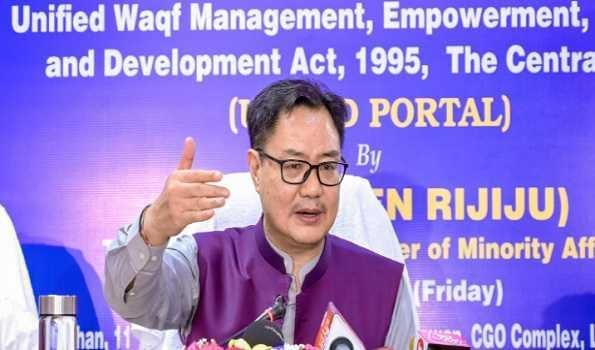 Why in News?
Why in News?The Union Minister for Minority Affairs has recently inaugurated the Unified Waqf Management, Empowerment, Efficiency and Development (UMEED) portal. This centralized digital platform is designed to oversee the management of Waqf properties throughout India.
Key Takeaways
- The UMEED portal was launched by the Ministry of Minority Affairs on June 6, 2025.
- It facilitates real-time registration, verification, and monitoring of Waqf properties.
- The portal is in accordance with the Waqf (Amendment) Act, 2025, which received presidential assent in April 2025.
Additional Details
- Core Purpose: The UMEED portal aims to enhance transparency, accountability, and public participation by making Waqf data digitally traceable.
- Centralized Registration: All Waqf properties are required to be registered on a single digital platform, receiving a unique 17-digit ID along with necessary documentation such as ownership papers, exact measurements, and geotagged location data.
- User-Friendly Design: The portal features dropdown-based inputs, GIS mapping, and a grievance redressal system to assist users.
- 3-Tier Verification:
- Maker: The Mutawalli inputs property data.
- Checker: A district official verifies the data entered.
- Approver: The CEO or an authorized Waqf Board officer grants final approval.
- Transparency and Privacy: While basic property details are accessible to the public, the privacy of sensitive data is maintained.
- Eligibility Rule: Properties registered in women's names are not eligible as Waqf properties, although women and vulnerable groups are prioritized for benefits.
- Support System: A toll-free helpline is available for technical assistance regarding the portal.
The registration process is overseen by the State Waqf Boards, with a deadline for all registrations set for six months following the portal's launch. Properties that are not registered will be labeled as disputed and referred to the Waqf Tribunal for further action. In cases of missing documentation, the Mutawalli must seek validation from the Tribunal.
GS2/Governance
Maintaining India’s Progress in Food Safety Standards
Source: The Hindu
On June 7, the world observes World Food Safety Day, and the 2025 theme, ‘Food Safety: Science in Action’ provides a critical opportunity to reflect on the evolving food safety landscape in India. The journey has transitioned from a basic focus on preventing food adulteration to embracing modern, science-based standards. However, gaps remain in scientific infrastructure, communication, and outdated regulations that require immediate attention.
Key Takeaways
- India's food safety regime has undergone significant transformation since the PFA Act of 1954.
- The establishment of the FSSAI in 2006 marked a shift towards a risk-based food safety approach.
- Challenges remain, including reliance on international toxicological data and ineffective risk communication.
Additional Details
- Prevention of Food Adulteration (PFA) Act of 1954: This act initiated India’s food safety journey by categorizing food as either adulterated or not, without considering the nature or quantity of contaminants.
- Food Safety and Standards Act of 2006: This act established the FSSAI and introduced a risk-based approach, setting maximum residue limits (MRLs) for pesticides and safe thresholds for food additives.
- Scientific Gaps in Risk Assessment: India’s framework still heavily depends on international data, which may not reflect local dietary habits and practices. The absence of India-specific Total Diet Studies (TDS) is a significant shortcoming.
- Risk Communication Issues: Technical terms such as MRLs and acceptable daily intake (ADI) values are often confusing to the public, leading to misunderstandings and panic during revisions.
- Regulation of Monosodium Glutamate (MSG): Despite scientific evidence supporting MSG's safety, outdated regulations persist, leading to consumer fear based on misconceptions.
- The Road Ahead: To enhance food safety, India must invest in scientific research, simplify communication, periodically review regulatory frameworks, and engage stakeholders to build trust.
In conclusion, while India has made commendable progress in food safety, true advancement requires a commitment to developing context-specific scientific knowledge, improving communication, and shedding outdated regulations. As India looks to the future, balancing scientific rigor with effective public engagement will empower citizens within the food safety system.
GS3/Environment
Water Management in India Needs a New Course
Source: The Hindu
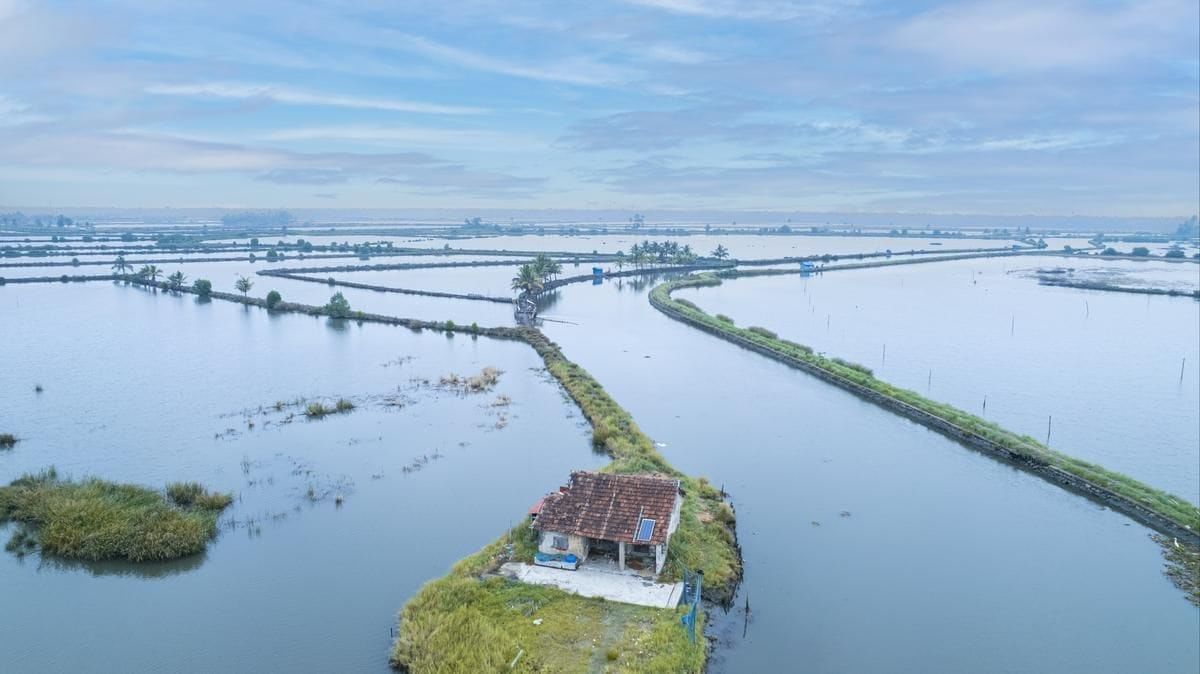 Why in News?
Why in News?The observance of World Water Day 2025 on March 22 highlighted the urgent theme of Glacier Preservation, reflecting a global awareness regarding the critical condition of the cryosphere and its essential role in freshwater availability and marine health. This year marks the United Nations' designation of 2025 as the International Year of Glaciers' Preservation, initiating a Decade of Action on Cryospheric Science (2025–2034). The evolving conversation around global water challenges encompasses the entire hydrological continuum, from mountain glaciers to oceans, necessitating a reevaluation of existing water governance models.
Key Takeaways
- The United Nations' World Water Development Report 2025 underscores the vital role of mountain glaciers in sustaining ecosystems and human populations.
- Melting glaciers due to climate change pose significant threats to water security and disrupt freshwater flow.
- The Source-to-Sea (S2S) framework for integrated water governance promotes holistic management across freshwater, coastal, and marine domains.
- India faces acute water stress, pollution, and a fragmented governance structure, complicating effective water management.
Additional Details
- Source-to-Sea (S2S) Approach: This framework emphasizes cooperation across different water domains and advocates for inclusive strategies involving all stakeholders, from governments to local communities.
- India's water issues include significant regional disparities, unsustainable groundwater depletion, and severe river pollution affecting public health and ecosystems.
- Despite updates to the National Water Policy, the S2S framework remains underutilized, failing to address the interconnected realities of water systems.
- A shift towards the S2S model aligns with Sustainable Development Goals (SDGs) 6 and 14, promoting integrated water resources management and reducing marine pollution.
To ensure the health of ecosystems and achieve climate resilience, India must embrace the S2S framework. This integrated approach is vital not only for addressing domestic water management challenges but also for contributing to global environmental goals. As we recognize the International Year of Glaciers' Preservation, reimagining water governance through this lens becomes not just an environmental necessity but a developmental imperative.
GS2/International Relations
India elected to UN’s Economic and Social Council (ECOSOC)
Source: AIR
Why in News?
India has been elected to the United Nations Economic and Social Council (ECOSOC) for the term 2026–2028, marking a significant achievement in its international diplomatic efforts.
Key Takeaways
- India is serving its 18th term in ECOSOC.
- The council plays a crucial role in coordinating the UN's work in economic, social, humanitarian, and cultural areas.
Additional Details
- Establishment: ECOSOC is one of the six principal organs of the UN, established in 1945 under the UN Charter.
- Mandate: It coordinates the UN’s economic, social, humanitarian, and cultural efforts.
- Composition: ECOSOC has 54 member states elected by the UN General Assembly for three-year terms.
- Functions and Powers: Oversees 15 specialized agencies, 8 functional commissions, and 5 regional commissions, focusing on key areas like living standards, employment, human rights, education, healthcare, and environmental protection.
- Engagement with NGOs: ECOSOC grants consultative status to over 1,600 NGOs and organizes global conferences.
- UN Oversight: It supervises agencies such as UNICEF, UNDP, and UNHCR.
- Sessions and Meetings: Main sessions are held each July, with additional meetings like the Finance Dialogues in April focusing on Sustainable Development Goals (SDGs).
- Legal and Institutional Details: Defined under Chapter X (Articles 61–72) of the UN Charter, ECOSOC is headquartered in New York and is the largest UN body shaping global development policy.
- Recent Milestone: India joined the UN Committee of Experts on Big Data and Data Science for Official Statistics (UN-CEBD), showcasing its data expertise.
- Policy Priorities: India advocates for inclusive growth, SDG progress, and south-south cooperation through evidence-based multilateral leadership.
In conclusion, India's election to ECOSOC emphasizes its commitment to global cooperation and its strategic role in addressing significant international issues through the UN framework.
Question:
With reference to the United Nations, consider the following statements:
- 1. The Economic and Social Council (ECOSOC) of UN consists of 24 member States.
- 2. It is elected by a 2/3 majority of The General Assembly for a 3-year term.
Which of the statements given above is/are correct?
- Options: (a) 1 only (b) 2 only* (c) Both 1 and 2 (d) Neither 1 nor 2
GS2/Governance
MHA Flags Inaction as Support for Poor Prisoners Goes Unutilized
Source: The Hindu
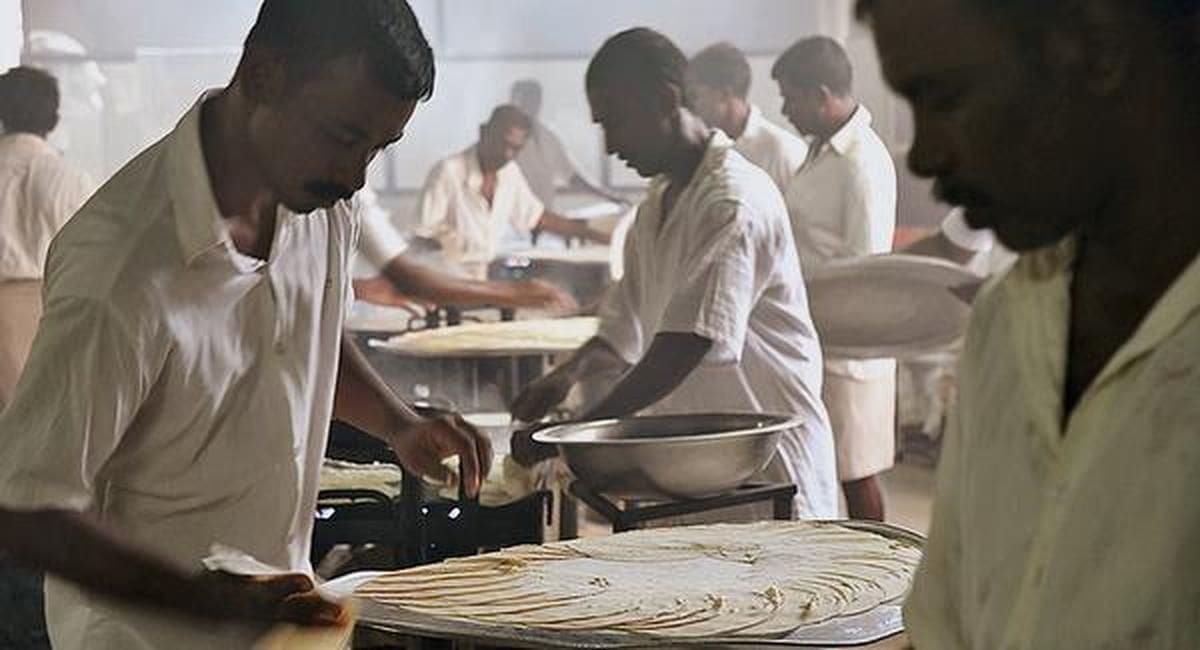 Why in News?
Why in News?The Union government has expressed serious concerns regarding the failure of several States and Union Territories to utilize funds allocated for aiding poor prisoners. These funds aim to assist those who are unable to secure bail or release due to financial constraints.
Key Takeaways
- The Ministry of Home Affairs (MHA) has emphasized the importance of the Support to Poor Prisoners Scheme during multiple video conferences.
- Despite the availability of funds, many States and Union Territories are not identifying eligible prisoners, leading to unutilized resources.
Additional Details
- Support to Poor Prisoners’ Scheme: Launched in May 2023, this scheme aims to assist economically disadvantaged inmates who cannot afford bail or fines.
- National Crime Records Bureau (NCRB): Functions as the Central Nodal Agency overseeing the scheme's implementation.
- Undertrial Prisoners: If an undertrial prisoner is not released within 7 days after being granted bail, the prison authorities must notify the Secretary of the District Legal Services Authority (DLSA).
- Financial Aid Process: Upon verification, up to ₹40,000 can be provided per case, preferably as a Fixed Deposit for court purposes.
- Exceptions: No financial aid is available for prisoners charged under laws like the Prevention of Corruption Act and UAPA.
- Convicted Prisoners: If a convicted prisoner is held due to unpaid fines, the Jail Superintendent must inform the DLSA within 7 days.
- Financial Assessment: The DLSA conducts inquiries within 7 days, possibly involving local NGOs and social workers.
- India Justice Report 2025: Highlights that over 76% of the prison population consists of undertrial prisoners, with a projected rise in jail overcrowding by 2030.
The MHA has urged States and Union Territories to take proactive measures in identifying eligible prisoners and to regularly convene District Empowered Committees to ensure timely assistance. Proper implementation of this scheme is crucial not only for providing relief to financially distressed inmates but also in addressing the issue of prison overcrowding.
GS3/Economy
Rail Link to Kashmir Valley
Source: NDTV
Why in News?
Prime Minister Modi recently inaugurated two Vande Bharat trains operating between Shri Mata Vaishno Devi Katra and Srinagar, symbolizing the establishment of a direct rail link to the Kashmir Valley. This significant development is anticipated to enhance regional growth, trade, and tourism, while fostering a deeper integration of the Kashmir Valley with the rest of India.
Key Takeaways
- Launch of direct rail link between Katra and Srinagar.
- Expected boost to development, tourism, and trade in the region.
Additional Details
- Early Railway Efforts: The first railway line in Jammu and Kashmir was constructed by the British in 1897, connecting Jammu to Sialkot (now in Pakistan) over a distance of 40-45 km. Subsequent proposals for rail lines from Rawalpindi to Srinagar and Jammu to Srinagar were made but did not materialize.
- Post-Partition Disconnection: Following the 1947 Partition, Sialkot became part of Pakistan, disrupting Jammu's railway connectivity until 1975 when the Pathankot-Jammu line was inaugurated.
- USBRL Project: The Udhampur-Srinagar-Baramulla Rail Link (USBRL) project began in 1994 and was officially approved in 1995, with sections becoming operational over the years.
- Completion of USBRL: The project includes 272 km of tracks, 36 tunnels, and 943 bridges, costing approximately ₹43,780 crore. It connects Katra and Srinagar in just 3 hours.
- Key Engineering Achievements:
- Chenab Bridge: The world's highest railway arch bridge at 359 meters above the riverbed, built to withstand winds of up to 260 km/h.
- Anji Khad Bridge: India’s first cable-stayed bridge, towering 331 meters above the Anji River valley.
- Longest Transport Tunnel: The 12.77 km long tunnel in Ramban district ensures all-weather connectivity.
- Economic Impact: The rail link is expected to transform tourism in Jammu and Kashmir, making transport of local products easier and reducing the cost of importing essentials.
This rail link marks a transformative milestone in enhancing connectivity to the Kashmir Valley, promising to benefit both the local economy and tourism significantly.
GS2/International Relations
Assam CM on Pakistan ‘scare narrative’: Could Chinese dams affect Brahmaputra flow in India?
Source: Indian Express
Why in News?
India has dismissed the "scare stories" disseminated by Pakistan and other entities concerning China's construction of dams upstream on the Brahmaputra River, particularly the ambitious 60,000 MW Medog Hydropower Project in Tibet.
Key Takeaways
- India contributes over 80% of the Brahmaputra's total water flow despite having only 34.2% of the basin area.
- The control over the river's flow allows India to develop flood management systems and hydropower projects.
Additional Details
- Major Contribution to River Flow: India experiences significantly higher rainfall, with an average of 2,371 mm annually compared to Tibet’s 300 mm, leading to its substantial contribution to the river's flow.
- Flood Management Potential: With control over a major share of the river’s flow, India can design effective flood control infrastructure, potentially mitigating annual floods in Assam.
- Strengthened Riparian Rights and Development Planning: India's dominant flow share enhances its claim as a principal riparian state, allowing for independent hydropower and irrigation projects.
- Medog Hydropower Project: This project represents a controversial initiative by China to build the world’s largest hydropower dam on the Yarlung Tsangpo River, with a planned capacity of 60,000 MW and an estimated cost of $137 billion, raising environmental, geopolitical, and social concerns.
China's proposed Medog project raises concerns for India due to:
- Strategic Control Over Water Flow: The dam could allow China to manipulate water flow, potentially creating artificial floods during monsoons or reduced water supply in dry seasons.
- Environmental and Seismic Hazards: The dam's location in a seismic zone poses risks for biodiversity, increases landslide threats, and may disrupt sediment flow critical for downstream agriculture.
- Absence of Water-Sharing Agreements: Unilateral actions by China could violate norms of equitable sharing, worsening trust deficits, as no formal pact exists like the Indus Treaty between India and Pakistan.
Steps Taken by India
- Development of Hydropower Projects: India is constructing significant hydropower projects in Arunachal Pradesh, such as the Dibang Multipurpose Project (2880 MW) and the Subansiri Lower Hydroelectric Project (2000 MW), to harness the Brahmaputra’s energy.
- Construction of Multipurpose Storage Reservoirs: India aims to create dams to control floods and ensure water availability during dry seasons, exemplified by the proposed Upper Siang project.
- Promotion of Inland Waterways and River Navigation: The Brahmaputra is being developed for trade and connectivity under India’s Act East Policy, with National Waterway-2 facilitating cargo movement between Assam and Bangladesh.
Way Forward
- Bilateral Water-Sharing Framework: India and China should engage in dialogue to establish a formal transboundary water-sharing agreement, ensuring data transparency and flow regulation.
- Regional Environmental Assessment Mechanism: A joint environmental impact assessment involving India, China, and Bangladesh could promote sustainable river basin management.
In conclusion, addressing the concerns surrounding the Brahmaputra's water flow requires collaborative efforts and strategic planning to ensure equitable resource management and environmental sustainability.
|
38 videos|5293 docs|1118 tests
|
FAQs on UPSC Daily Current Affairs: 7th June 2025 - Current Affairs & Hindu Analysis: Daily, Weekly & Monthly
| 1. What are the recent decisions made by the RBI's Monetary Policy Committee (MPC) and their implications for the Indian economy? |  |
| 2. What is the significance of the Chenab Railway Bridge inaugurated by the Prime Minister? |  |
| 3. How has India's extreme poverty changed according to the revised World Bank poverty line? |  |
| 4. What are the global vaccine trends and their relation to the resurgence of measles? |  |
| 5. What is the purpose of the UMEED portal for Waqf properties? |  |





















